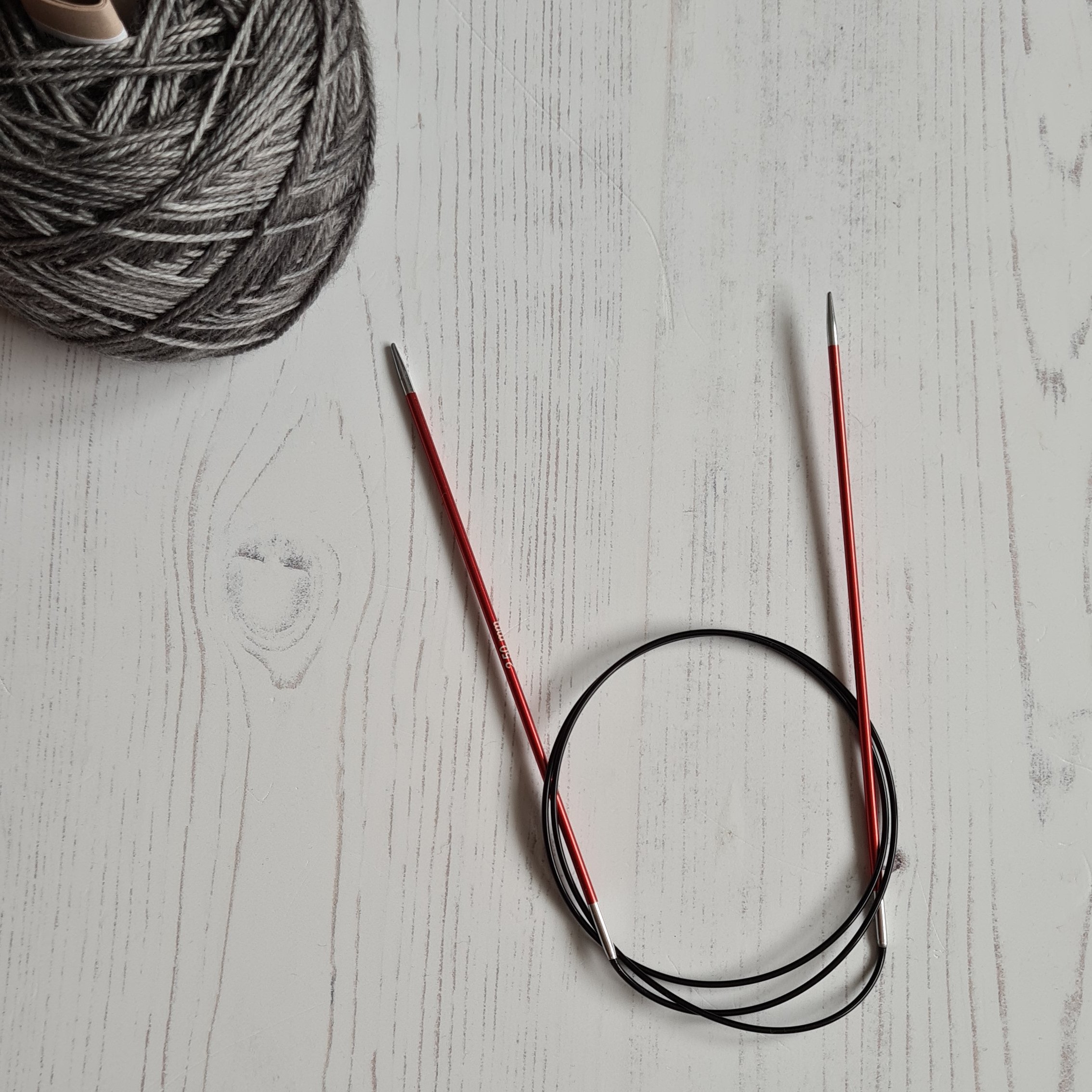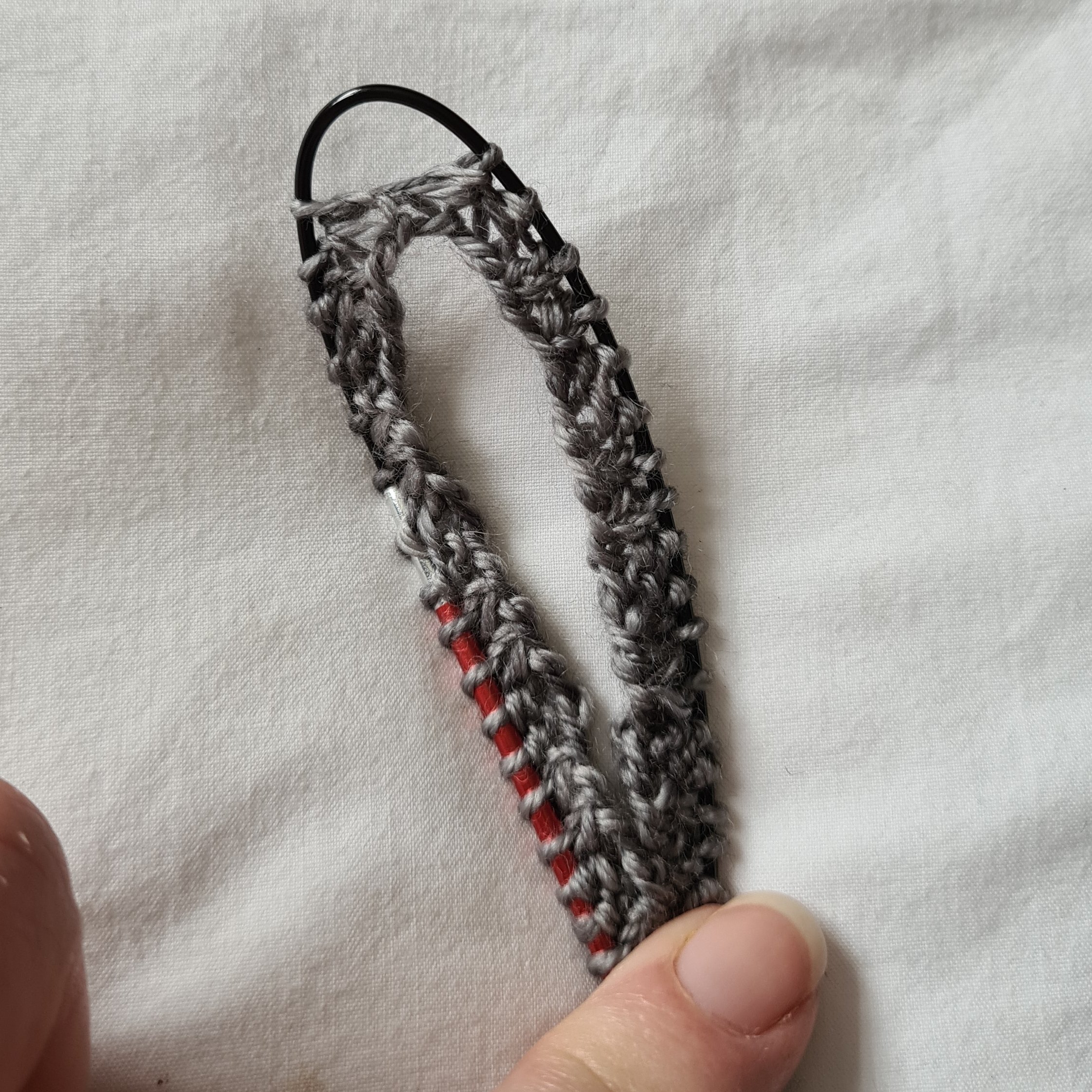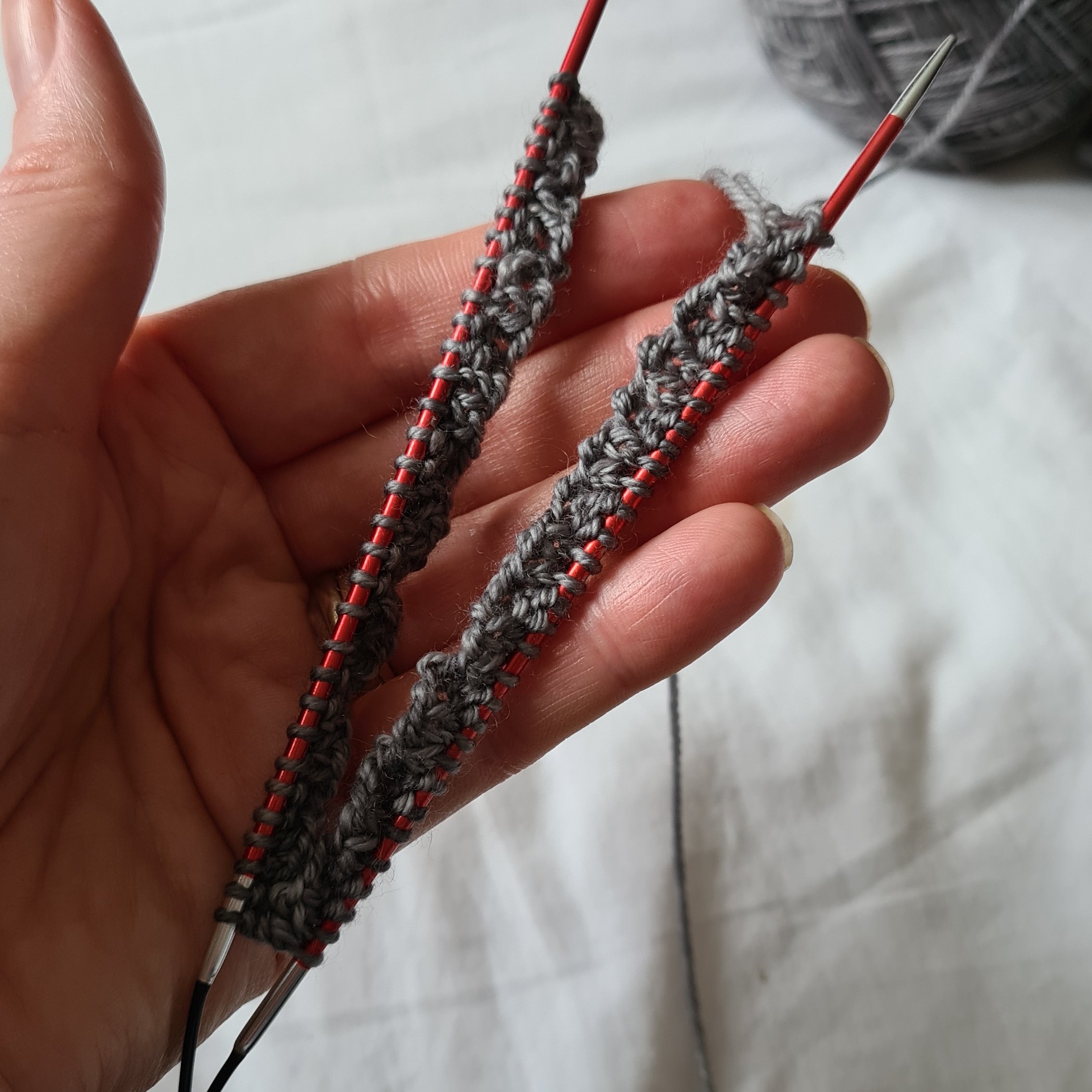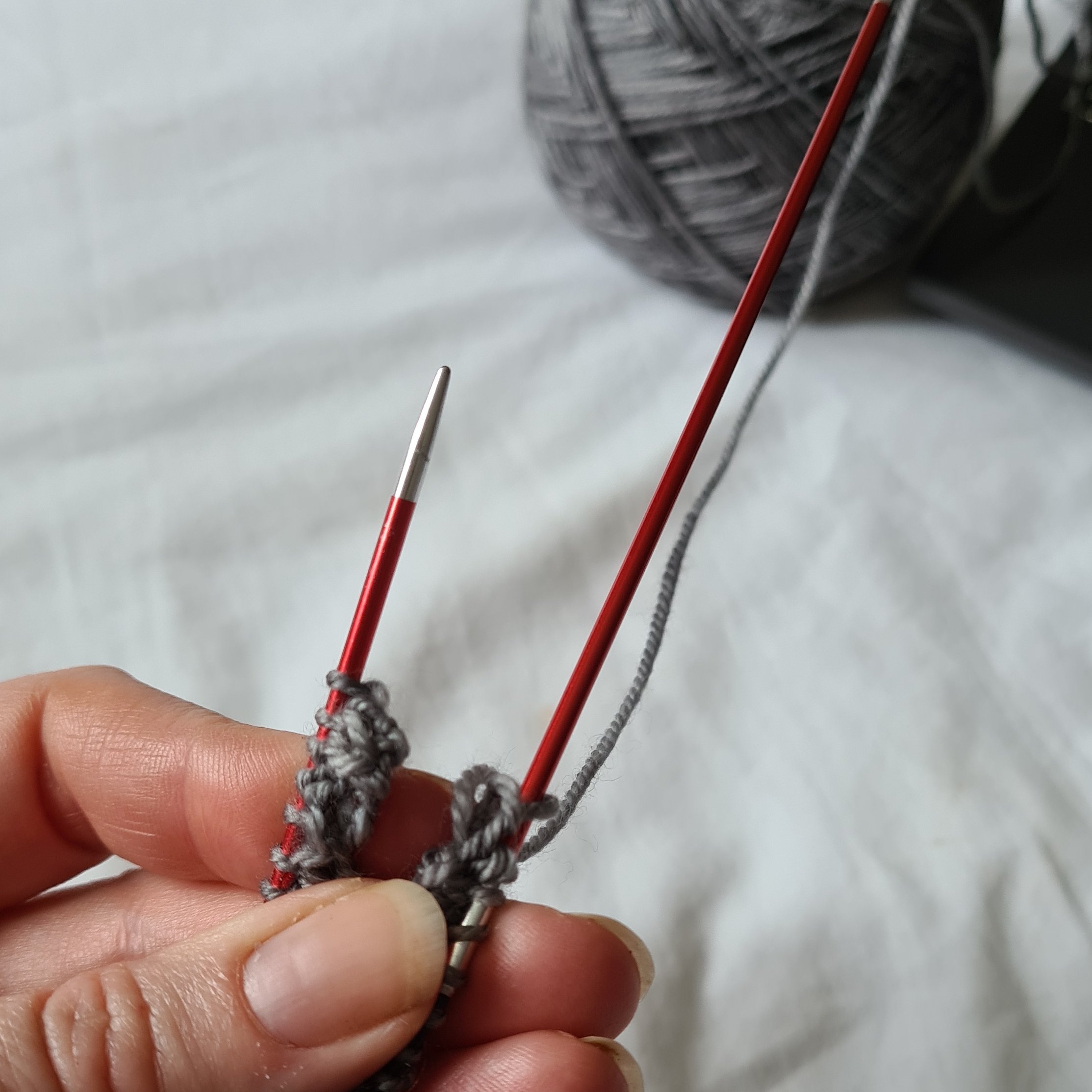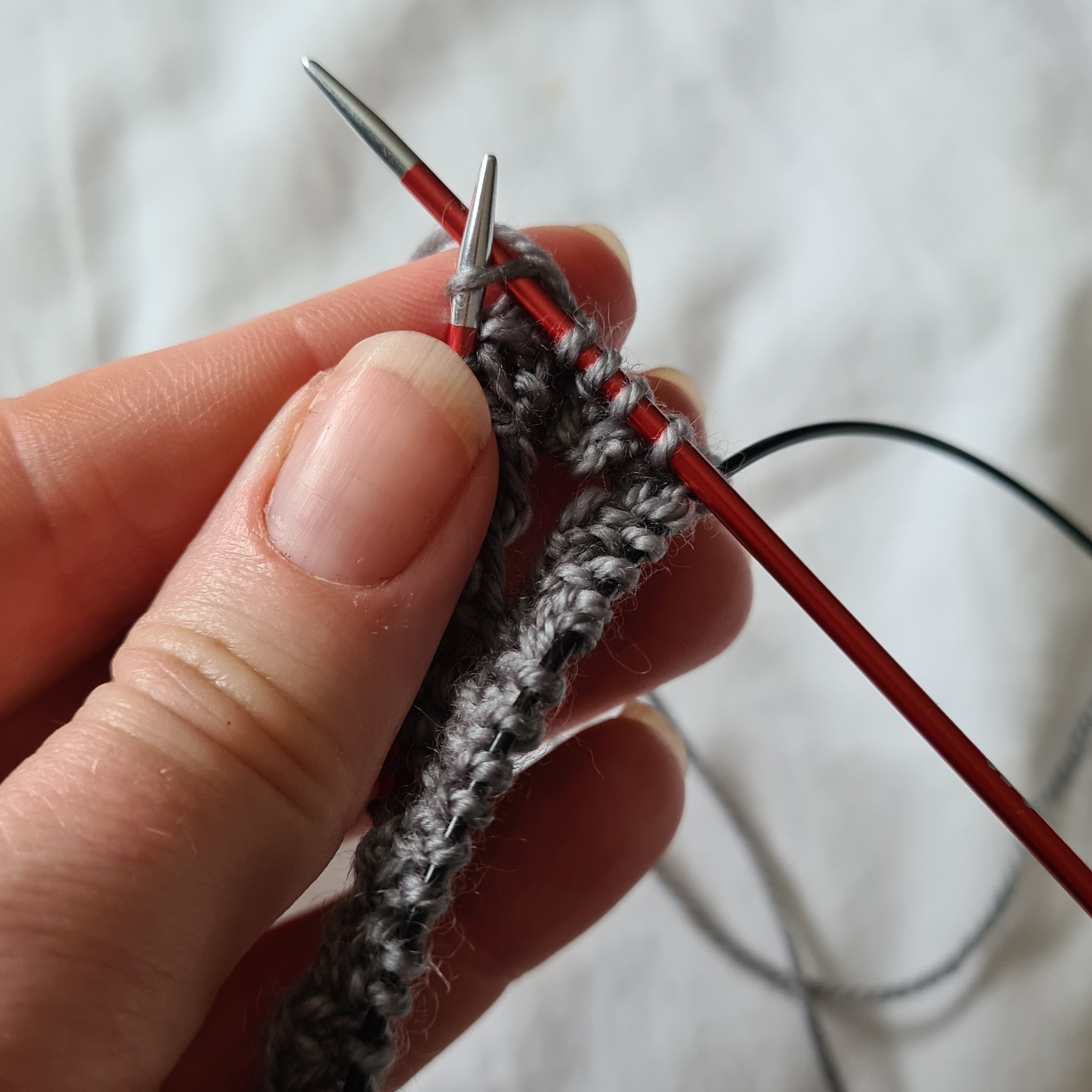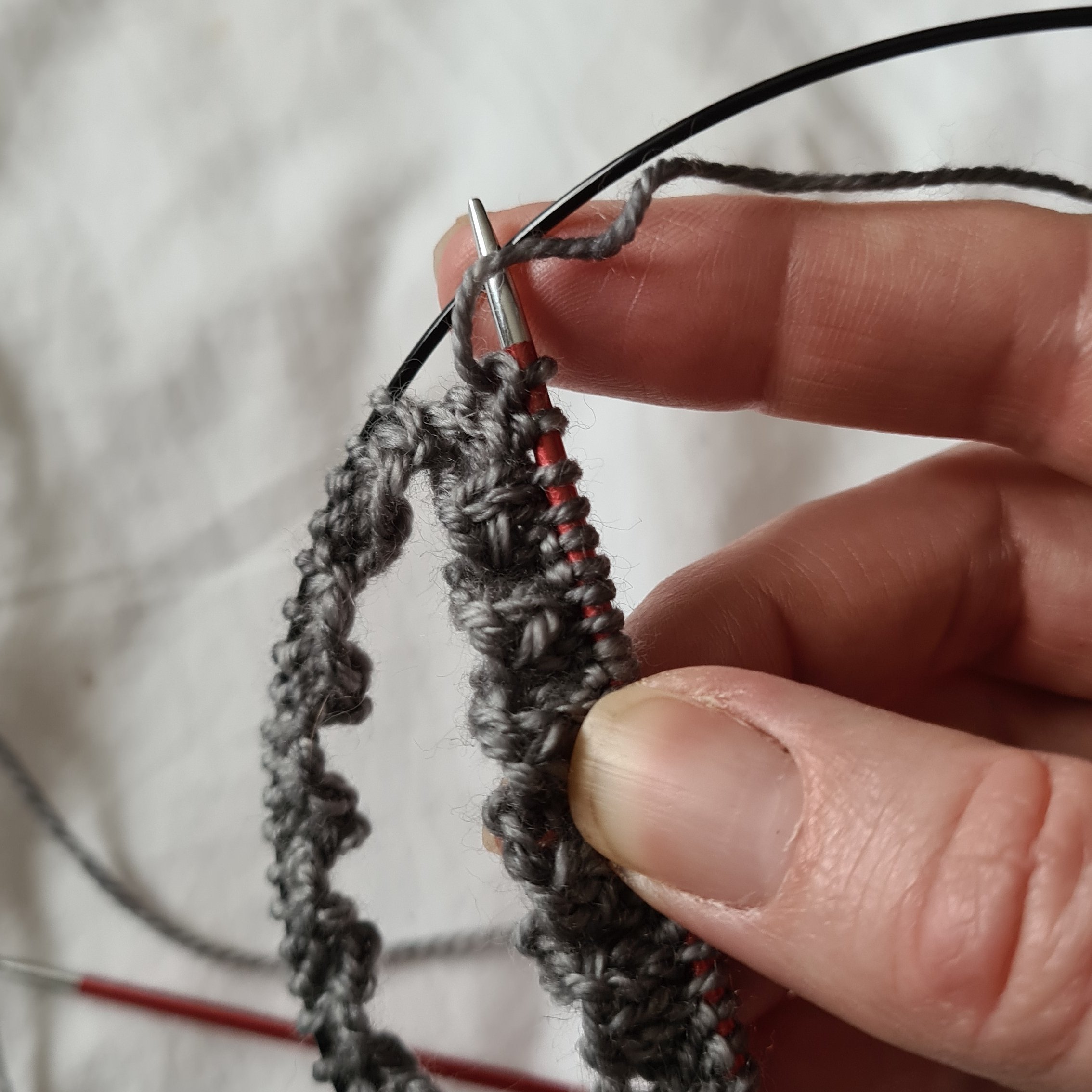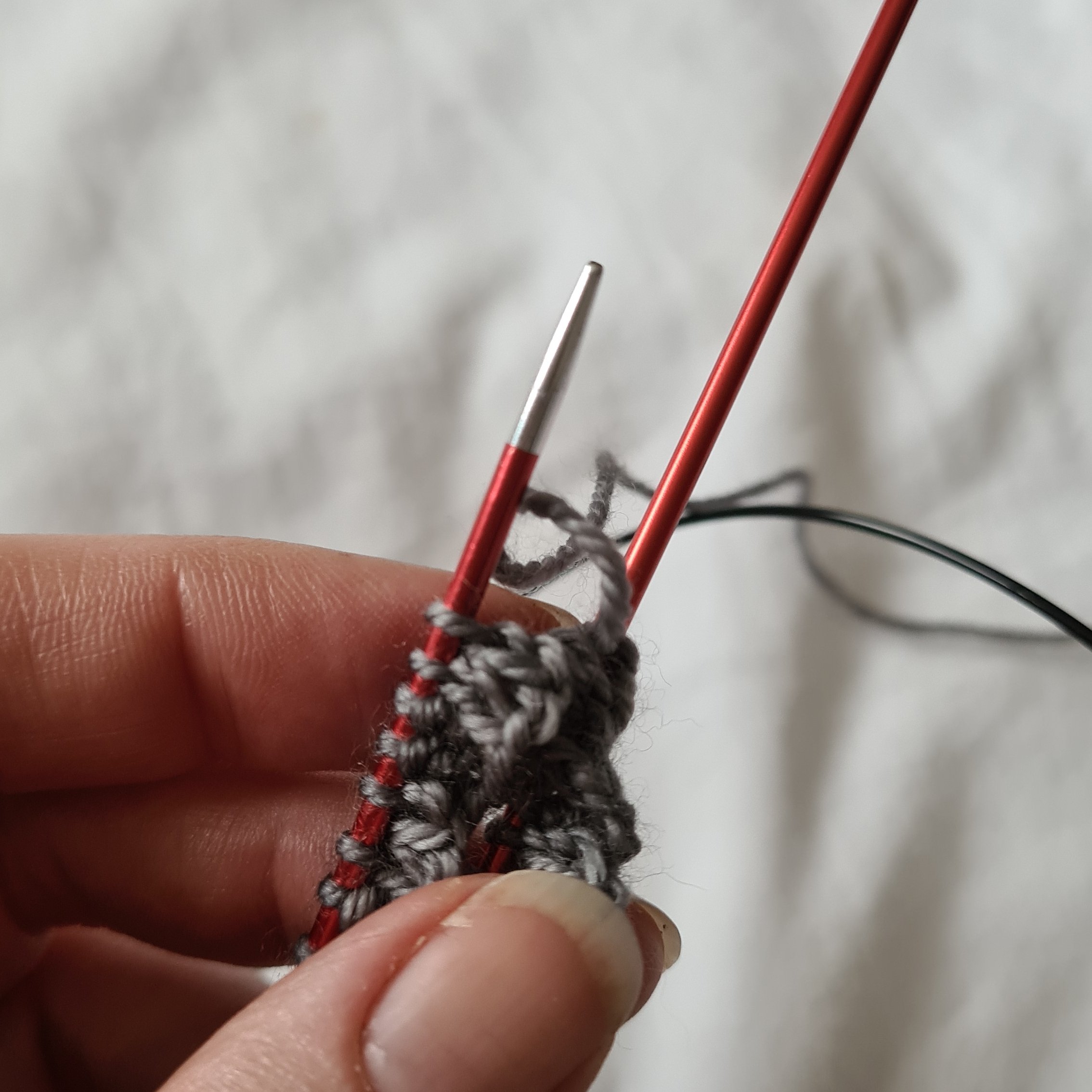It’s a valid question to be fair. And one which, back in my non-knitting days I would have struggled to answer. It’s true that if you are thinking of shawls as something brown and rustic, worn over the shoulders, pointed end at the back and the fronts crossed over one’s bosoms (a la Clare Fraser in Outlander) then the answer is probably “very few”.
But as a knitter you’ll know that’s a very narrow definition of the word shawl and that there are far more imaginative shapes that can be conjured up with yarn and needles, to say nothing of the different ways to wear them.
In fact it’s a fair bet that at some point in the last week or two you have encountered someone in the street wearing a shawl - it just might not have looked like one.
My favourite way to wear a shawl is bandana style - holding the pointed end in front of me and wrapping the ends behind me - to hang down on either side of my neck. For this reason I tend to prefer elongated triangle shapes (where the ends or arms are longer). Asymmetric shawls are even better as they have far more wrappable potential. In the picture that accompanies this post I am wearing my kite-shaped shawl - The PPS - in just this way. This is the larger two-skein version, but in this link from Instagram I am demonstrating how I wrap the smaller version.
Worn like this, shawls are a brilliant addition to your autumn winter wardrobe. Neatly filling the gap at the top of your coat where untoward chills can creep in, they can add warmth without too much bulk. Not to mention the fact that they can add a welcome pop of colour to the dullest of ‘big coats’.
They also have the added advantage that you can keep them on inside, when you might feel obliged to shed your coat but want to stay with an additional layer of warmth in case of pesky air conditioned draughts. I can’t tell you the number of times I have been grateful for the warmth of a shawl while sitting through an interminable kids movie (although since Covid hit it’s been a very long time since I’ve done that).
In short, shawls are fun, colourful and an invaluable addition to your winter wardrobe. For the price of a single skein of sock yarn you can have the fun of knitting it, plus a whole season (and more) of draught-free warmth. Sounds like a win-win to me







